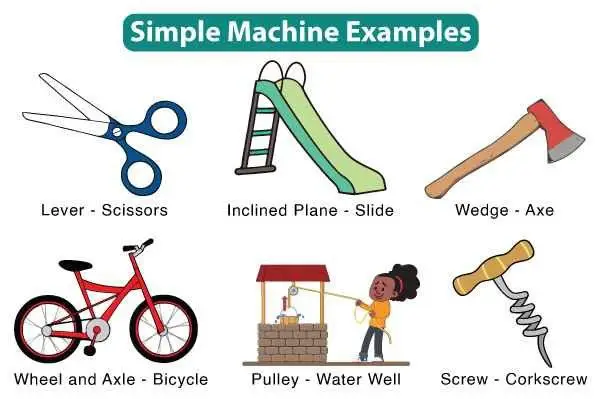Hello, young learners! Welcome back to Primary 1 Basic Science & Technology. In our previous lesson, we learned about Simple Machines – Basket. Today, we’re going to learn about the safe use of simple machines at home and in school.
Objectives
By the end of this lesson, you should be able to:
- Identify dangers in the use of simple machines at home and in school.
- Define simple machines.
Safe Use of Simple Machines at Home and in School
Simple machines are basic mechanical devices that make work easier and faster. Some of these machines include:
- Levers: A lever is a rigid bar that pivots around a fixed point called a fulcrum. Examples include a see-saw, a crowbar, and a bottle opener.
- Pulleys: A pulley is a wheel with a groove around its rim that helps to change the direction of a force. Examples include a flagpole, a crane, and a window blind.
- Wedges: A wedge is a simple machine that is used to split or separate objects. Examples include an axe, a knife, and a doorstop.
- Inclined Planes: An inclined plane is a flat surface that is at an angle to the horizontal. Examples include a ramp, a slide, and a staircase.
- Screws: A screw is a simple machine that is used to hold things together or to move things. Examples include a screw, a bolt, and a drill bit.
- Wheels and Axles: A wheel and axle is a simple machine that is used to move things. Examples include a bicycle, a car, and a wagon.
Dangers in the use of simple machines:
There are several dangers associated with using simple machines, and it’s important to be aware of them to stay safe. Some of these dangers include:
- Getting caught or crushed: Fingers, hands, or other body parts can get caught or crushed between moving parts of a simple machine, causing serious injury.
- Falling accidents: Improper use of a simple machine can lead to falling accidents, especially if the machine is not stable.
- Cuts: Sharp edges, blades, or moving parts of certain simple machines can cause cuts.
- Burns: Simple machines that generate heat, such as stoves, can cause burns.
Evaluation Questions
Now that you’ve learned about the safe use of simple machines, let’s see if you can answer these questions:
- What are simple machines?
- List three potential dangers in using simple machines.
- What are some examples of simple machines that you use at home or in school?
- How can you use simple machines safely?
Conclusion
Remember, simple machines can be very helpful, but they can also be dangerous if not used properly. Always be careful when using simple machines, and follow the safety instructions provided. Keep learning and exploring the world around you! See you in the next lesson!









